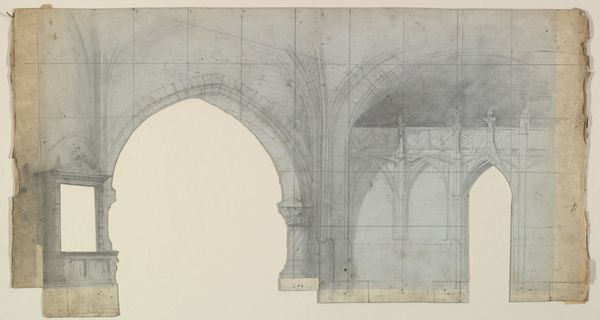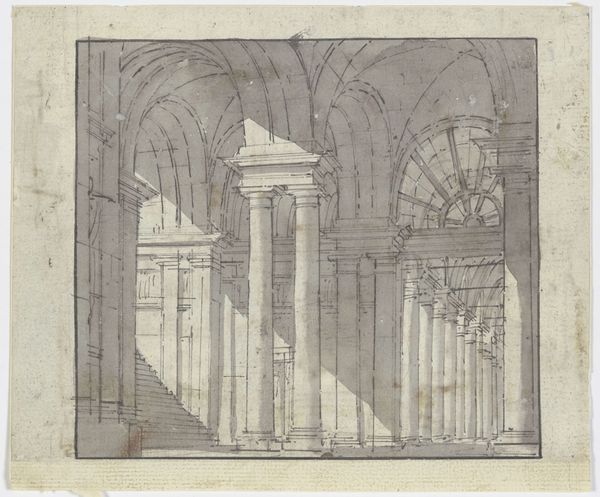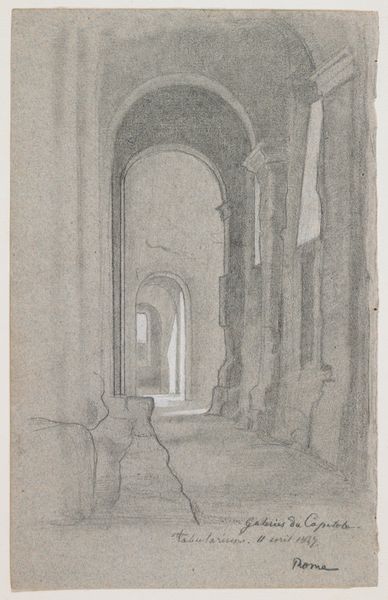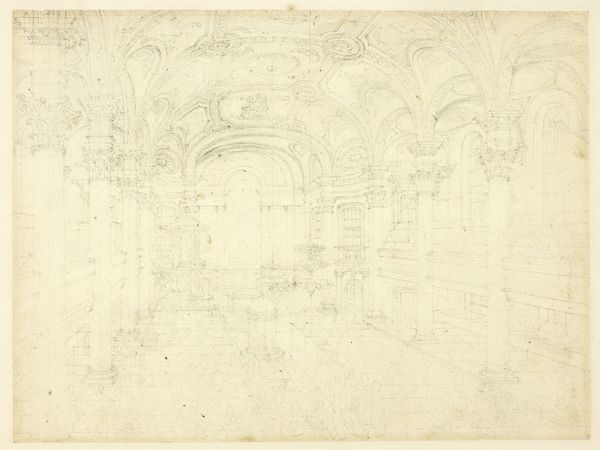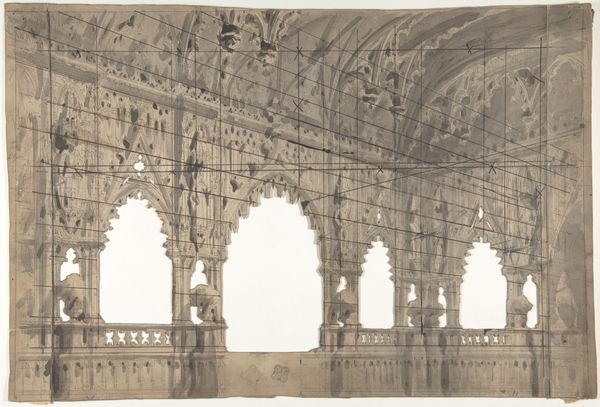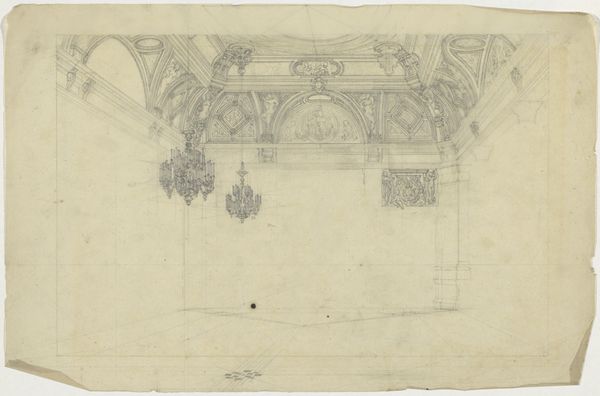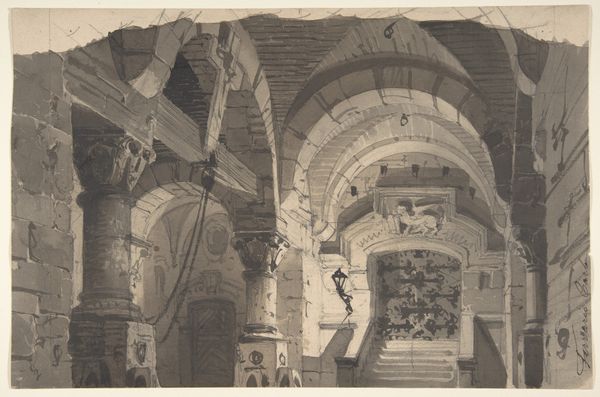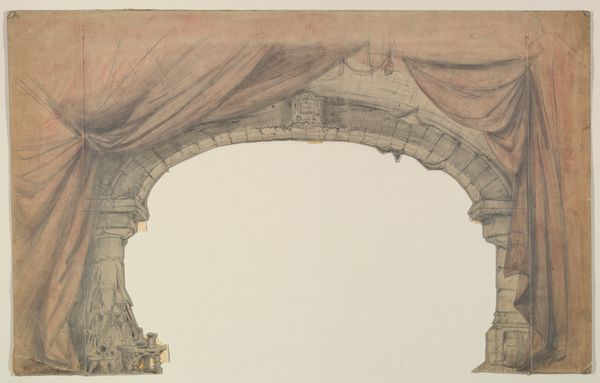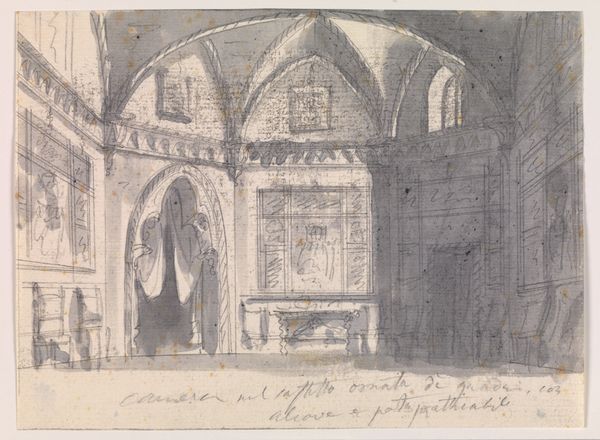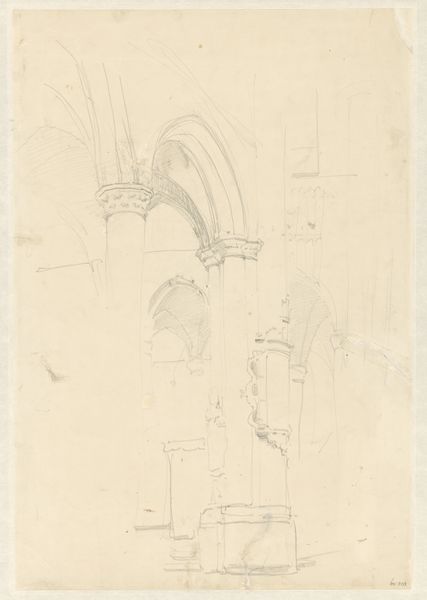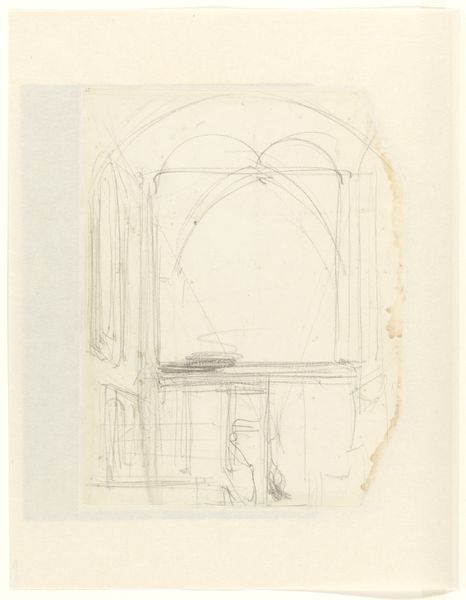
Design for a Stage Set at the Opéra, Paris: Church Interior 1830 - 1890
0:00
0:00
drawing, pencil
#
drawing
#
neoclassicism
#
geometric
#
pencil
#
cityscape
Dimensions: sheet: 10 1/4 x 19 1/2 in. (26 x 49.6 cm)
Copyright: Public Domain
Curator: This is Eugène Cicéri's "Design for a Stage Set at the Opéra, Paris: Church Interior," created between 1830 and 1890. It's currently held at the Metropolitan Museum of Art, rendered in pencil and drawing. Editor: Ooh, it gives me this gothic-romantic vibe, like a daydream inside a crumbling cathedral. Makes me think of old libraries and secret societies. Curator: Indeed. The sketch really showcases neoclassicism within the dramatic arts. Consider, if you will, how such interiors speak to the narratives being staged. These structures not merely act as backdrops. Rather, they embed social hierarchies and theatrical illusion. What emotions does the building’s representation solicit? Editor: Solicit? Fancy word! I get what you mean though. I think it stirs up feelings of both power and vulnerability. Those massive arches and pillars are clearly meant to intimidate, but then there’s that almost delicate pencil work, hinting at a certain fragility. And the lighting. The sketch appears dark yet rays of light somehow come filtering through the windows…It's like even within those walls, there is a hint of outside space Curator: Exactly. Churches, in the 19th century especially, represented much more than just spiritual havens. These also represented civic identity, architectural prowess, and concentrated power. Stage designs like Cicéri's therefore invite conversation around cultural expectations, and hegemonic representation that underpinned French society at that moment in history. It prompts inquiry into performative space. What's it telling us about spectacle and societal control? Editor: Wow, putting on my thinking cap now. It's fascinating how much layers are in that single drawing, that really gets to the power behind the stage setting. In other words it’s much more than just decorative, isn't it? Curator: Precisely! In many respects such renderings act as social mirrors that amplify themes about status, gender and political authority through the built environments portrayed on stage. In this context it transcends mere staging to become a complex social document about Paris Opera, a powerful political space. Editor: Totally changes how you look at the theatre doesn't it! For me anyway. Curator: Absolutely. This single design is a small key for the greater historical theater of French culture. Editor: Never thought I would have a whole philosophical crisis over a drawing today! Thanks!
Comments
No comments
Be the first to comment and join the conversation on the ultimate creative platform.
